
DUBAI- Emirates Airline (EK) is the fourth largest airline globally by Available Seat Kilometers (ASKs), despite ranking 14th in total capacity.
Known for its long-haul operations, Emirates leverages its strategic hub at Dubai International Airport (DXB) to connect passengers across a vast global network.
In 2024, Emirates expanded its capacity year over year (YoY), with significant increases to key markets such as Australia (+17.6%) and the United States (+4%).
With the introduction of the Airbus A350 in late 2024, the carrier aims to expand further in 2025 by deploying smaller aircraft on new routes while maintaining its position as a leading global connector.
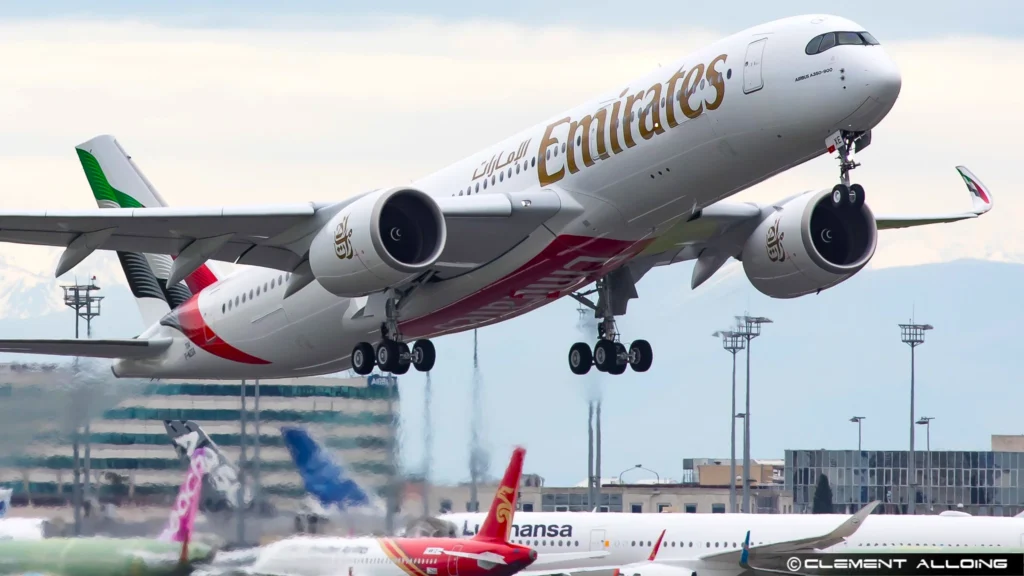 Emirates Airbus A350-900 | Photo: Clément Alloing
Emirates Airbus A350-900 | Photo: Clément AlloingEmirates Strategic Growth
Emirates Airline (EK) continues to strengthen its market presence through calculated growth strategies.
In 2024, the airline reported a 5.1% YoY increase in overall capacity, supported by targeted expansions in major international markets:
- Australia: +18% YoY
- United Kingdom (UK): +6% YoY
- United States (USA): +4% YoY
These figures highlight Emirates’ focus on high-demand corridors, particularly in the Asia-Pacific and European regions.
The integration of the Airbus A350 into its fleet has enabled the airline to serve thinner or emerging routes more efficiently, supporting sustainable expansion plans in 2025.
At Dubai International Airport (DXB), nearly two-thirds of Emirates’ passengers are connecting travelers, reinforcing DXB’s role as a premier global transit hub.
 Photo: Emirates
Photo: EmiratesRegional Capacity Performance
Emirates’ capacity distribution in 2024 reflects its focus on international markets, with no domestic operations.
The Middle East dominates, accounting for 52.5% of total capacity, followed by Asia and Europe at 17.1% each. Below is a detailed breakdown of capacity by region:
| Middle East | 37,637,194 | -7.1% | 52.5% | -1.0% |
| Asia | 12,272,449 | -4.5% | 17.1% | +0.1% |
| Europe | 12,258,212 | -1.0% | 17.1% | +0.7% |
| Africa | 4,320,219 | N/A | 6.0% | -0.1% |
| North America | 2,516,240 | +7.5% | 3.5% | +0.4% |
| Southwest Pacific | 2,167,304 | -11.9% | 3.0% | -0.2% |
| Latin America | 579,484 | +1.1% | 0.8% | +0.1% |
In 2024, Emirates Airline (EK) demonstrated a carefully managed expansion strategy, focusing on high-yield and high-demand markets.
The airline saw overall capacity grow by 5.1% compared to the previous year. This growth was supported by increases in key regions: North America (+7.5%), Latin America (+1.1%), and especially Australia, which recorded a 17.6% rise in capacity.
Meanwhile, some areas, such as Asia (-4.5%) and Southwest Pacific (-11.9%), experienced declines compared to 2019 levels but remained strategically important for the airline.
Although the Middle East remains Emirates’ largest market by capacity at 52.5%, this region saw a slight decline of 7.1% compared to 2019.
Europe showed resilience with only a minor contraction of 1% over the same period, while maintaining a 17.1% share of total capacity.
The airline also strengthened its presence in the UK and India, both of which rank among the top five country markets.
Overall, Emirates continues to adjust its regional focus based on evolving demand patterns and strategic route planning.
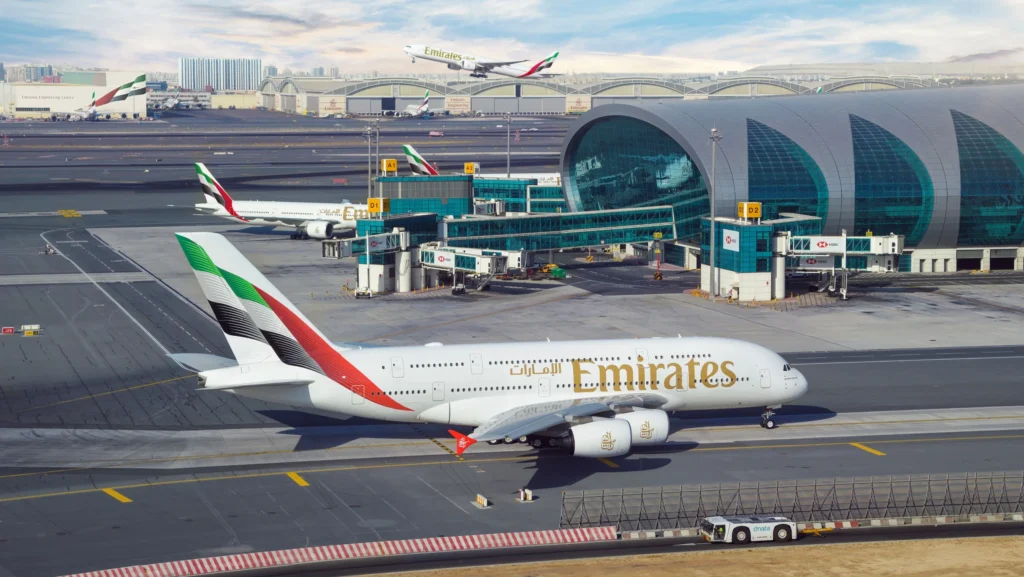 Photo: Emirates
Photo: EmiratesOperational Metrics and Market Dominance
The United Arab Emirates leads with nearly 34 million seats offered, followed by the United Kingdom with over 6 million seats.
India, the United States, and Australia complete the top five, with Australia showing the highest growth at 17.6% YoY.
Major airports served by Emirates include London Heathrow (LHR), Bangkok (BKK), Singapore (SIN), and Sydney (SYD), where it holds between 2% and 3% market share.
At Dubai International Airport (DXB), Emirates commands a commanding 57% market share, operating over 34 million seats.
| Capacity (Seats) | 71,751,102 | +5.1% |
| Frequency (Flights) | 172,445 | +4.2% |
| Available Seat Kilometers | 361.9 billion | +6.4% |
| Active Routes | 283 | +1.8% |
The airline’s network includes 283 routes spread across Africa, Asia, Europe, the Americas, and the Southwest Pacific.
Route frequency increased by 4.2% YoY, and ASKs grew by 6.4%, underlining the airline’s expanding influence in global air travel.
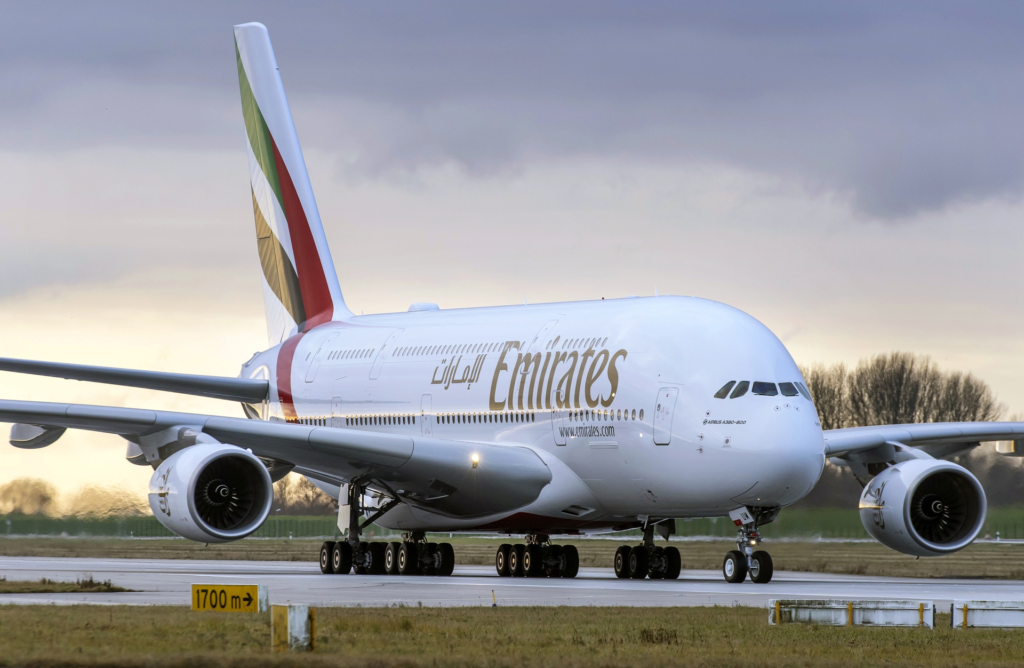 Photo: Emirates
Photo: EmiratesTop Markets and Routes
Top 5 Country Markets by Capacity
- United Arab Emirates: 34,067,058 seats (+4.6% YoY)
- United Kingdom: 3,441,730 seats (+6.4% YoY)
- India: 3,228,046 seats (+0.8% YoY)
- United States: 2,226,594 seats (+4.0% YoY)
- Australia: 1,788,860 seats (+17.6% YoY)
Top 5 Busiest Routes
- London Heathrow (LHR) – Dubai (DXB)
- Dubai (DXB) – Bangkok (BKK)
- Dubai (DXB) – Mumbai (BOM)
- Cairo (CAI) – Dubai (DXB)
- Manchester (MAN) – Dubai (DXB)
Top 5 Airports by Seat Capacity
- Dubai (DXB): 34,033,342 seats (57% airline capacity share)
- London Heathrow (LHR): 1,231,858 seats (2% airline capacity share)
- Bangkok (BKK): 1,110,076 seats (3% airline capacity share)
- Singapore (SIN): 815,322 seats (2% airline capacity share)
- Sydney (SYD): 746,236 seats (3% airline capacity share)
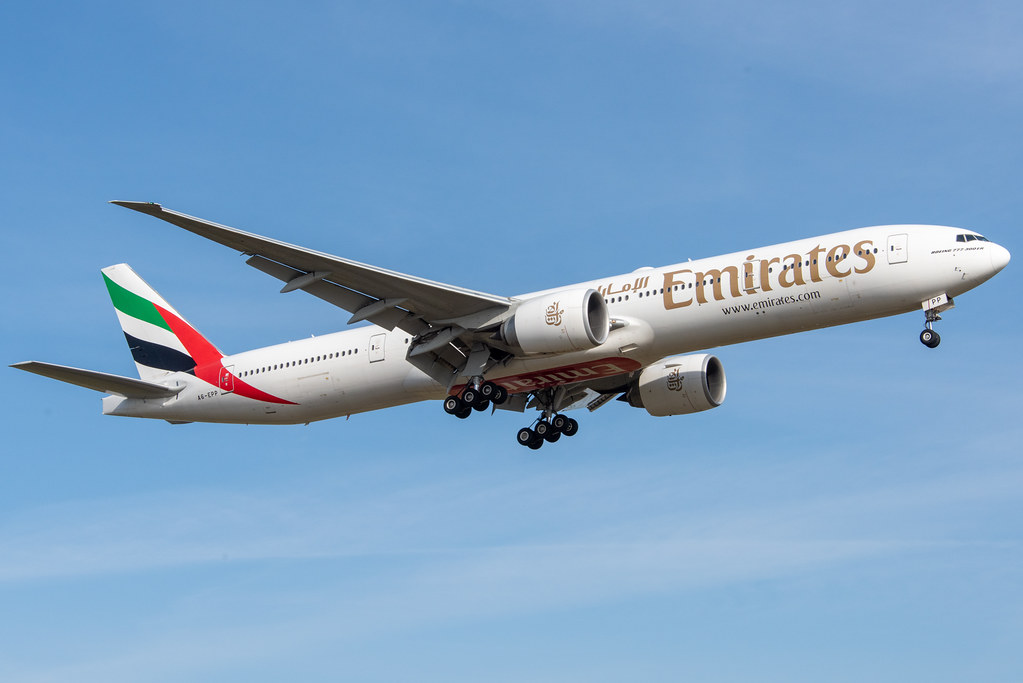 Photo: Alexander Lang | Flickr
Photo: Alexander Lang | FlickrFleet Composition and Aircraft Strategy
Emirates operates one of the youngest and most modern fleets in the industry, focused almost entirely on widebody aircraft designed for long-haul operations.
As of 2024, the airline has 228 active widebody aircraft, with 32 temporarily out of service for maintenance or storage.
It also has 309 widebody aircraft on order, primarily consisting of next-generation models like the Airbus A350.
This fleet strategy supports Emirates’ evolution toward greater flexibility and fuel efficiency.
While the airline continues to rely heavily on large aircraft like the Boeing 777 and Airbus A380, the upcoming delivery of the A350 allows it to serve thinner or less congested routes more economically.
Unlike traditional short-haul carriers, Emirates does not operate regional jets or narrowbody aircraft, reinforcing its commitment to intercontinental travel.
| Regional Jets/Props | 0 | 0 | 0 |
| Narrowbodies | 1 | 0 | 0 |
| Widebodies | 228 | 32 | 309 |
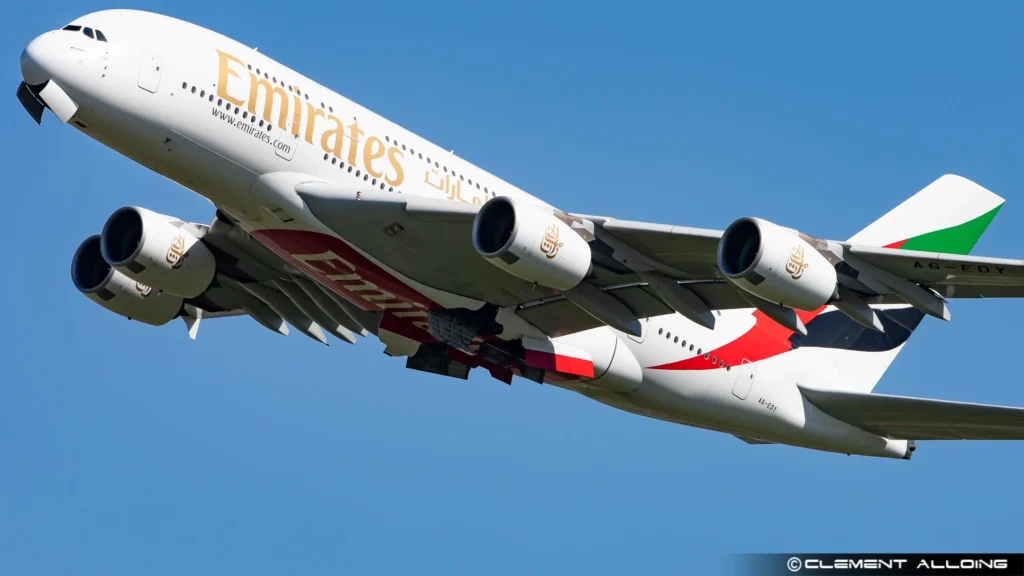 Photo: Clément Alloing
Photo: Clément AlloingAirfare Trends: 2023 vs 2024
Average economy fares for Emirates flights have declined slightly in 2024, dropping from $1,172 in 2023 to $1,093.
| 2023 | 1172 |
| 2024 | 1093 |
This reduction could reflect competitive pressures, increased seat supply, or adjustments to attract demand.
Despite falling average prices, the airline has maintained steady domestic pricing, indicating stability within UAE-based operations.
The airline’s revenue strategy appears to balance fare competitiveness with network expansion.
By offering a mix of premium and economy products and leveraging its Dubai hub, Emirates continues to manage fluctuating pricing trends while supporting capacity growth across core international markets.
Conclusion
Emirates continues to lead global long-haul connectivity from its Dubai base. With fleet modernization, strategic route launches, and focused market growth in Australia, the UK, and the USA, the airline remains on a steady path to expand through 2025.
The addition of Airbus A350s further supports its goal to reach new destinations with more flexible aircraft capacity.
Feature Image by Clément Alloing | Flickr
Stay tuned with us. Further, follow us on social media for the latest updates.
Join us on Telegram Group for the Latest Aviation Updates. Subsequently, follow us on Google News
Emirates Elevates First Class on A380s and 777s with New Upgrades
The post Emirates Airline Growing by 17.6% to this Country appeared first on Aviation A2Z.

















